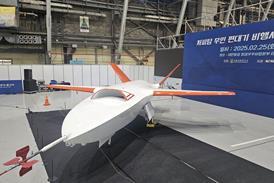SEATING FOR more than 1,000 passengers will be possible aboard growth versions of the Airbus Industrie A3XX, according to Jurgen Thomas, senior vice-president for the consortium's Large Aircraft division.
Thomas says that, when it enters service in 2003, the A3XX will be the "world's largest airliner, and the first with twin-aisle seating in both upper and lower decks". Very large aircraft "-will be the only way of carrying more passengers without building new airports or extending those which suffer from congestion today", he adds.
Airbus is resisting pressure from Boeing, which is close to launching its stretched 747-500/600, and is keeping to its original launch date of "some time in 1997" for the A3XX. The consortium says that it "-will not be rushed" into a premature launch, and that it sets greater store on achieving the right solution for airlines. "Once wrong, ever wrong," says Thomas. As it now stands, the A3XX fits within an 80 x 80m box, to enable the aircraft to be accommodated by the new 80m-span departure gates planned at new airports and terminals, say Airbus officials at the show. The wing will be around 40% larger than that of the Boeing 747-400, and primary structures in carbonfibre composites will include the wing outboard of the outer engines, the fin and horizontal tailplane. "The big challenge will be the dimensions of these structures," says Thomas, "considering that the horizontal tailplane alone will be of a similar size to the entire A310 wing."
The A3XX cockpit will have full commonality with the existing A320/A330/A340, so that operators can benefit from full cross-crew qualification between all modern Airbus types.
The aircraft will also have a variable-camber wing which, Thomas says "-has reached maturity for introduction". Laminar flow for the wing is also being evaluated, although Thomas admits that "-it may be too early to embody this technology".
There are, says Thomas, "no technical showstoppers" to the A3XX. He adds, however, that "-we must be convinced that it will make money for its investors before we finally build it". Airbus is optimistic that it can show savings of 30% through its cost-reduction programme, but says that it remains "aware of the risks, such as low production rates during economic recession".
Thomas adds that it is "obvious" that the $8 billion investment for the A3XX will require a broadening of the current four-nation partnership. "It is certain that the programme will see new entrants from Europe, the USA and the Far East," he says. Airbus admits that none has yet been signed up.
Growth versions of the A3XX will take off with more than 1,000 passengers on board
Source: Flight International























